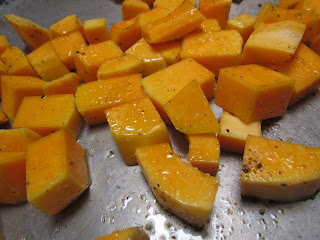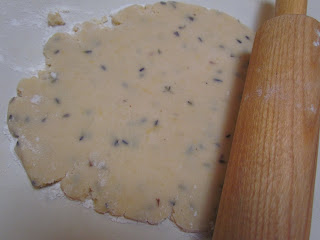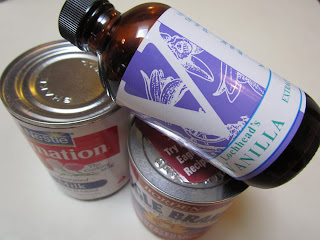The unappetizing sound of words such as porridge, gruel, and mush don't generally evoke the same feelings as the words oatmeal, polenta, and risotto.
The textures might not all turn out exactly the same (depending on the grain), however, they're really the same concept, right?
Think about it...
Grain or seed drowned and plumped with broth, flavored with herbs or spices, vegetables, cheese...
There are many people who have to be very careful of what they eat.
It seems like all of a sudden peanuts are a huge problem- at some schools no one is allowed to bring a peanut butter and jelly sandwich to lunch.
I, for instance, have to try to stay away from foods that have preservatives as well as those that are processed- and this is part of the reason I cook.
We have a family history of celiac disease and certain sensitivities. If one has an intolerance to gluten, and they are unaware of this or it's ignored, it can turn into celiac disease. The older one gets, the less their body is able to digest it... it's similar to the development of Type II diabetes in this sense.
A dietician-aunt of mine, who recently went to a continuing education class on the subject, said that it's common among people of Irish ancestry.
Oh, wheat... I'm sorry, it wouldn't have worked out anyway. Sigh...
Anyway, one of my sisters asked if I could try to post things that were gluten free.
Gluten is a protein present in grains that assists in giving baked goods a chewy texture and elasticity as well as helping them rise. It's what makes pizza crusts, bagels, pasta, cakes, and cookies what they are.
It's added to other items- like sauces- to give them a better texture.
It's comfort food! It's what we like and are familiar with, and it can be difficult to give them up!
Gluten is in some, but not all, grains.
Because it's so prevalent, some people have to stay away from MANY things including commonly available items containing wheat, rye, and barley.
Oats? Debatable depending on who you talk to.
Sadly, this would usually make the potential selection fairly small and lacking in flavor and pleasant texture.
We've recently decided to start exploring grains over here...
There are SO MANY grains we're not familiar with. They're not mainstream, but they can be so good.
The ALLOWED grains include quinoa, corn, buckwheat, rice, millet, potato starches, and tapioca starches.
This happened to be a really good recipe. No joke.
Ah, roasted vegetables are always excellent. The texture, the color, the flavor...
Ah, roasted vegetables are always excellent. The texture, the color, the flavor...
Even if you're not a vegetarian or have to be gluten-free, these things can still be good for you.
I recently read about how many celebrities are advocating "Meat-Free Monday," an idea which I found very interesting. It's a concept I KNOW Catholics would be familiar with, only at the other side of the week.
The reason behind these "Mondays" is supposed to be for ethical, environmental, and political purposes, but for others, it's not new- advocates aren't necessary-it's for religious reasons and it's an act of sacrifice.
Does the horribly dire concept of eating vegetarian cause you to be stricken with convulsions?
Don't be dramatic. It's really not that bad.
P.S. You are permitted to eat alligator on Fridays.
Roasted Winter Vegetables and Cheddar Millet Polenta
Adapted from Fine Cooking, February/March 2011
serves 8-10 as a main dish
1 1/2 lb. butternut squash, peeled, seeded, and cut into 1-1 1/2 inch cubes
1 lb. brussels sprouts, washed, ends trimmed and halved if large
1 lb. mushrooms, washed, ends trimmed, and halved
1 lg. yellow onion, cut into approximately 1 1/2 inch chunks
3 t kosher salt, separated
6 T extra virgin olive oil, separated
1 t freshly ground black pepper, separated
1 1/2 t dried thyme
4 medium garlic cloves, minced
1 1/2 T sherry vinegar
1 1/2 c millet
8 c. vegetable (or chicken) broth
3 T unsalted butter
6 oz. white cheddar cheese, grated
Preheat oven to 450 degrees F.
On a large sheet pan toss the cubed squash, 2 T olive oil, 1 1/2 t salt, and 1/2 t pepper. Spread evenly on a large rimmed sheet pan and roast about 10 minutes.
While squash roasts, toss the Brussels sprouts, mushrooms, and onion in a large bowl with minced garlic, 2 T olive oil, thyme, 1 1/2 t salt, and 1/2 t pepper. Combine the partially cooked squash with the other vegetables, and spread all the vegetables on the sheet pan. Roast for 20 minutes, stir, and continue roasting about 10-15 minutes longer, stirring occasionally so that all the vegetables cook evenly and caramelize a bit. Remove the vegetables to a large serving bowl. Whisk together the sherry vinegar and the last 2 T olive oil in a small bowl. Toss the cooked vegetables with the vinaigrette.
While squash roasts, toss the Brussels sprouts, mushrooms, and onion in a large bowl with minced garlic, 2 T olive oil, thyme, 1 1/2 t salt, and 1/2 t pepper. Combine the partially cooked squash with the other vegetables, and spread all the vegetables on the sheet pan. Roast for 20 minutes, stir, and continue roasting about 10-15 minutes longer, stirring occasionally so that all the vegetables cook evenly and caramelize a bit. Remove the vegetables to a large serving bowl. Whisk together the sherry vinegar and the last 2 T olive oil in a small bowl. Toss the cooked vegetables with the vinaigrette.
While the vegetables roast start the millet polenta.
Rinse and drain the millet. Add the millet to a large saucepan and stir over medium heat to toast the grains (7-8 minutes). Add 7 1/2 c vegetable broth to the toasted millet and bring to a boil over medium-high heat. Reduce the heat so the broth simmers and cover. Stir the millet after 20 minutes and allow it to continue simmering gently, stirring every few minutes to prevent it from sticking to the pan. When it becomes a thick, creamy porridge, it's finished. This will take about 30 minutes and the grains should have a chewy texture. If it seems to thick, add a little of the reserved broth. Stir in the cheese and season to taste with salt and pepper.
Serve the polenta in wide bowls with the roasted vegetables spooned on top.
































































